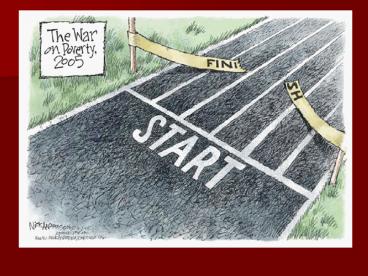Functional Model PowerPoint PPT Presentation
1 / 19
Title: Functional Model
1
(No Transcript)
2
Poverty
- Strategic Inability to change national or local
strategic direction despite the evidence - Absolute vs. Relative
- (Global vs. Intrasocietal)
- Emotional The recovering Hippocampus
3
Strategic Poverty 1
- Rising numbers of problem drug users
- Rising purity levels and better deals
- Lengthening life cycle of self-harm
- Declining age of first use
- Rising Deaths and ill-health
- Increasing fossilisation of exclusion
- Increasing convictions for non-violent drug
offences - Relationship between drug economy and acquisitive
and organised crime
4
Strategic Poverty 2
- 1980s saw dramatic shift in social profile
- Relationship between Drug trade and international
oppression - Britain the only Western nation to feature in top
5 Heroin importers - Newly available in communities which were
previously free of supply - 58 20-24 yrs use illicit drugs (highest ever)
- CONCLUSION Neither prohibition nor prevention
forces have made any noticeable impact on uptake
5
(No Transcript)
6
Relative vs. Absolute 1
- Poor people are everywhere yet they are
invisible Orshansky - Some seem destined to poverty almost from and by
their birth - 25 (was 40) of those who qualify as poor one
year no longer do the following year - Wealth of Nations Adam Smith
7
Relative vs. Absolute 2
- Top ranking civil servants live longer and more
healthily than lower ranking - Social Gradient in Health (Marmot)
- African-Americans smaller chance of reaching old
age than Keralans - Subordination gt Stress gt Damage to immune system
- Limitation of capacity for social advancement
8
(No Transcript)
9
(No Transcript)
10
Cornerism
- Not the place that happens to have social
problems - The place where many social problems intersect
and become inseparable from each other or the
culture - Residents problem is the fact of being brought
up and living there - Single issue attempts to deal with problems
ineffective
11
SOCIAL INCLUSION EXCLUSIONSUBSTANCE USE
PROBLEMS
- School Non-Attendance
- Early Criminality
- Experience of Local Authority Care
- Unemployment as Cultural norm
- Experience of homelessness
- Heavy early use of drugs
- Personal experience of Mental Health problems
- Parents actively criminal with history of drug
abuse - Disruption of family unit
12
Functional Model
13
Treatment
- NTORS Treatment works
- Can reduce harmful behaviour (Crime / drug use)
- Can improve physical and mental health
- Ability to change predisposing life features
doubtful - In many treatment systems still seen as a
function of personal psychopathology rather than
social circumstance - Only rarely embedded in communities
- Rarely encourage client group productivity
14
Treatment Limitations 1
- OUTREACH Can be undermined by more formal and
rigid adjunctive services - HEALTH PROMOTION Can lack credibility if seen
as dissonant - - Those most at risk least likely to be affected
- NEEDLE EXCHANGE limited by function and by
anonymity - COUNSELLING Can be idealogically limited
- - Only indirect support for structural change
- - Terms of engagement can be rigid especially
with active drug use - 12 STEP limited appeal
- - Doesnt address structures of dependency
15
Treatment Limitations 2
- DETOXIFICATION Seen as rigid
- - Lacks power to deal with wider issues
- RESIDENTIAL REHAB Decontextualised
- SUBSTITUTE PRESCRIBING - Doesnt promote change
if wider issues undressed - - Practical difficulties in adapting to change
- - Problems with generalising good practice
- - High proportion continue illicit drug use
- - Many relapse once through service
- - Poor retention rates
- - Waiting times
16
(No Transcript)
17
PHASE 3
- Community Safety Forum
- New Deal
- Progress 2 work
- New Futures
- Benefit reform
- - All generically promoted and partitioned
- Examples of Asian projects which build their own
enterprise initiatives to pay for services within
local community
18
SUGGESTIONS
- Focus on cause not symptom
- Holistic Approach in which work is key
- Develop new ways of helping people into work
- Give Social enterprise a central role
- Ensure the law reduces harm
- Tackle barriers to change amongst strategists
- Match new domestic policies with a new global
approach
19
(No Transcript)

